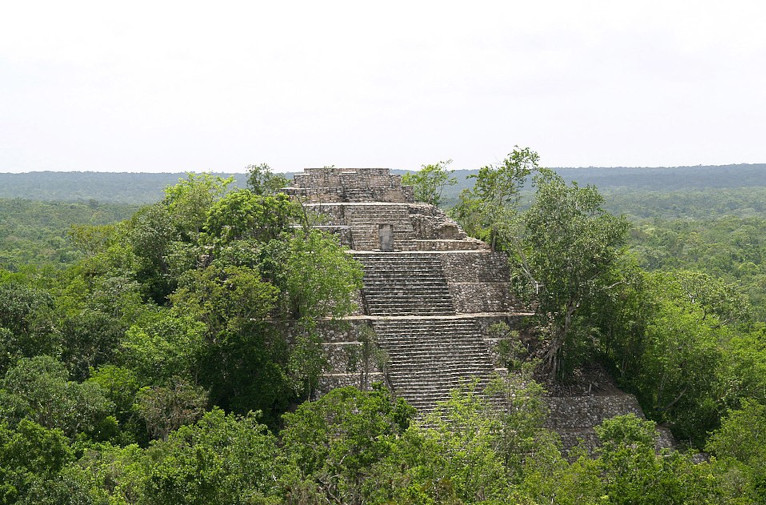This article, which is the first of two, applies the concept of Sankofa to consider the critical, and perhaps pivotal, moment in history in which we find ourselves currently. Sankofa originates from the Akan inhabitants of Ghana, and broadly describes the importance of remembering and incorporating knowledge from the past in order to move forward. Or put another way, learning from the past in order to better steer the future.
History is of course littered with moments that proved to be inflection points; sometimes this was clear to those living through these ruptures, other times the significance of the moment only became clear with hindsight. This moment likely falls into the former category, if for no other reason than major events are happening faster than they can be fully understood; no matter what anyone might say about it, the 2020s decade has so far been anything but dull. The academic Peter Turchin, using his cliodynamics approach, previously predicted that a confluence of instability and disruption would occur around now, and reality has duly delivered. However, this moment looks to be more than just another predicable apex of unrest.
Since the start of 2025 alone we have already seen the fundamental foundations of the global geopolitical system profoundly challenged. Constraining climate change to <1.5°C looks progressively more doubtful, and global conflict flashpoints are mounting and escalating. Global extinction rates continue to soar far beyond background levels, and a technological dystopia continues to take shape. It is difficult to credibly imagine such a general situation simmering down of its own accord, and decisions made in coming years will be crucial for what direction the world may take into the medium and longer term. It is with these epochal patterns in mind that a look back and forth in line with Sankofa may be insightful.
This first part is a look back through time to a representative cross section of moments in history in which societies faced notable calamities and particularly severe conditions. These cover a wide range of historical timeframes and contexts, from ancient through to early modern. The intent of this is to look with open eyes at what has been thrown at humans in the past, understand the dynamics that drove the events, and what their significance was. This will provide the basis for the forward-looking second part, which will consider speculative visions and pathways that global society may take from the current moment, informed by learnings from these historical events.
As noted in a previous article, in the race against time to build momentum behind changes our current kamikaze trajectory, outreach with graphs, numbers, facts and logic isn’t cutting it any more. Perspectives from obtuse angles may therefore start to add value; with that in mind, what follows are some none-too-cheerful but important overviews (presented in chronological order) which capture some key points about what some of our forebearers endured:
- Late Bronze Age Collapse – from approximately 3000-1000 BC the rim of the Mediterranean Sea and the Near East was inhabited by a number of extensive, interconnected, and highly organised kingdoms and empires (namely the Egyptians, Babylonians, Minoans, Mycenaeans and Hittites) which were collectively referred to as the ‘Bronze Age Civilisations’. As the name suggests, they were defined by their perfection of bronze technology (before it was usurped by iron technology), and after having expanded and developed for centuries, these societies underwent near-total collapse over the course of just a few decades up to approximately 1180 BC. The underpinnings of this are complex and uncertain, but archaeological evidence and radiocarbon dating indicates that climate-driven droughts and agricultural failures and consequent famines affecting whole regions of the Mediterranean and Levant occurred in the timeframe of the collapse. Various historic records also describe the sudden arrival of the ‘Sea Peoples’ from approximately the turn of the 12th century BC.
These seaborne invaders appeared in large numbers from the western Mediterranean, mounting attacks which caused widespread disruption and physical destruction. A compelling piece of evidence in the records suggests that the Sea People were more than just opportunistic raiders, as they included all parts of society i.e., including women and children, rather than predominantly male ‘warrior castes’. This supports the idea the invaders comprised whole societies displaced from areas in which agriculture had been severely curtailed. Populations in the affected areas may have been driven to sea-borne invasions of adjacent regions, in which case incursions may have been existential migrations by ‘climate refugees’ seeking basic resources and territory for survival. Whatever their origin, these invaders, along with accompanying disease and the early but superior iron-based tools and weaponry that may have brought, most likely contributed to the cascading and total collapses of the Bronze Age civilisations.
- 6th Century European/Asian ‘Fog’ – this event occurred between the years of 536-547 (during the Early Middles Ages, following the fall of the Western Roman Empire). Records and narratives from disparate parts of the world (Europe, the Middle East and Asia) describe a significant temperature excursion (cooling event) lasting approximately a decade, starting in 536. The records describe a ‘fog’ (likely a ‘dust veil’ or ‘dry fog’) that significantly reduced insolation levels in the affected regions, resulting in sustained drops (on the order of 1.5-2.5°C) in temperature. The main consequence of this persistent cold and dark was widespread crop failures in the affected regions (records describe locations as widespread as Ireland, Scandinavia, Mesopotamia, and China as being impacted), declines in food availability (described in records from Ireland as ‘bread failures’) which persisted for several years, and eventually, full-blown famines.
Tree ring data had previously corroborated the historical records of there being cold summers in the 530s and 540s, but it was investigations of glacial ice cores that robustly identified the likely underlying cause of the cooling event. These showed enrichments in elements associated with volcanic ash, along with glass particulate, indicating that large volcanic events had taken place which had injected aerosols into the upper atmosphere, reflecting insolation. Geochemical analysis linked these to volcanoes in Iceland, and two eruptions are in 536 and 540 (combined with weather systems that spread the aerosols towards Europe and Asia) are thought to be the initiators of the cold period. Therefore, the widespread famines were caused by changes to radiative forcing and local temperatures resulting from the volcanic activity; detail of the societal consequences of this event are scant but the time around 536 AD has nonetheless been described without hyperbole as “the worst year to be alive”.
- Classical Mayan Collapse/Meso-American Drought – Mayan civilisation was one of the most sophisticated and extensive pre-modern societies, but a large subpart (comprising the southern lowlands of modern-day Mexico) of this sprawling civilisation underwent a profound collapse (other parts of the Mayan civilisation located in northern areas, the central highlands and coastal areas, were not affected) during the ‘Classical’ period (from approximately 800-925). During this time very significant drops in population occurred, social structures disintegrated (for example, evidence of elites disappeared and record keeping ceased, including records of the causes of the collapse), and large-scale construction ceased in the major cities and population centres, which were subsequently permanently abandoned. The ruins left by this event were overrun by forest and weren’t rediscovered until the 19th
Given that no direct records of the collapse period have been found, the likely cause has been identified using proxy environmental data. Analysis of isotopic composition of water bound in sediments in Lake Chichancanab indicate that severe drought occurred during the period approximately 800-1000. Modelling of the data provided by this analysis indicates that precipitation decreased by 41-54% (peaking at a 70% reduction), and relative humidity by 2-7% (relative to contemporary conditions). These conditions would have severely affected the irrigation-reliant agriculture that supported the large population centres, leading to widespread food shortages and famine, and compounding effects such as social disruption (likely directed against elites in particular, who were believed by the general population to be able to guarantee rainfall). Therefore, the (probable) famines were caused by hydroclimatic variations (severe regional drought) resulting in agricultural output declines, though the causative mechanisms of the drought itself have not been fully established. Extensive anthropogenic mercury contamination of the general environment may also have also been a contributory factor in declining function in Mayan society prior to the climatic events.
- 14th Century European Great Famine – Starting in the winter of 1313, a period of severe weather lasting until 1317 occurred across continental Europe and the British Isles. This was characterised by repeated cycles of stormy winters and cool summers in which heavy rainfall and severe flooding led to ubiquitous crop damage, harvest failure and livestock loss, and consequently a severe famine affecting widespread areas. Historical records describe extreme price rises as food became generally scarce, compounded by factors such as shortages of salt for food preservation (due to seawater no longer evaporating well in the cool temperatures). As second order effects including disease, disorder and criminality spiked, people resorted to cannibalism and eating seed grain, and records show that even royalty struggled to find food. The consequence was that approximately 10-15% (and up to 25% in some localised areas and cities) of the overall European population did not survive these years.
Data from the Old-World Drought Atlas (a tree-ring based data source) shows that the growing seasons preceding the 1314-1316 ‘famine years’ were the fifth wettest over Europe between 1300 and 2012, which corroborates the historical records. The cause of this extreme weather is linked to the transition between the Medieval Climate Anomaly (the ‘Medieval warm period’) and the Little Ice Age, hypothesised to be related to sea-ice to ocean feedbacks weakening the North Atlantic subpolar gyre circulation, manifesting as a brief period of high interannual climate variability. It has also been postulated that aerosols from remote volcanic activity (Mount Tarawera in New Zealand) may also have compounded the short term excursion (occurring within a macro-scale climate transition) which drove abrupt, continent-wide agricultural output declines.
- General Crisis of the 17th Century – The ‘General Crisis’ describes a prolonged period (approximately 80 years) of social unrest, conflict, rebellions and population decline across the whole Eurasian landmass. The drivers of this crisis were in many cases localised, but in aggregate they led to profound changes in the socio-political organisation across a large geographical area. The Thirty Years War (1618-1648) was a primarily religious and political conflict that spread to affect most of the European landmass and its constituent states, and although it is was a brutal and destructive war by any measure, it can be considered as just a ‘sub-event’ of the wider General Crisis. The timeframe of the General Crisis (and the Thirty Years War in particular) was characterised by violence and social breakdown becoming widespread over large areas, leading in turn to severe constraints to the food supply as a result of disruption to agriculture, plundering by military forces, and even ecosystem changes (such as ‘pest explosions’). The death toll from the resulting famines and spread of disease (particularly typhus) was very high, with civilian deaths from these causes much larger than military deaths.
Despite the underlying causes being in many cases localised (e.g., religious sectarianism and inter-state rivalry), the synchronous occurrence of multiple disturbances to socio-political systems in such a range of different polities across a very large geographical area suggests a more overarching driver. Several sources have linked the initiation of the events of the General Crisis to the general cooling trend of the ‘Little Ice Age’, which began several centuries earlier. Bio-productivity and agricultural production responded quickly to temperature changes, but the resulting socio-political disruptions (inflating grain prices, social disturbance and migration) from declines in food per capita occurred more slowly. However, a ‘fatal synergy’ (or interplay) may have emerged from the interaction of these climatic and socio-political dynamics which drove growing unrest, further disrupting the food system, and so on, until full-scale war broke out.
- 19th Century Hunger Crises – two major famines and periods of societal disruption occurred during the 19th century, centred on the years 1816-17 and 1875-78. The earlier event started with the ‘year without a summer’ (1816), in which anomalous summer weather (including frost and snowfall, excessive rainfall and storminess) in the northern hemisphere resulted from much-reduced insolation following the eruption of Mount Tambora (in modern-day Indonesia) in April 1815. This eruption, still the largest in recorded history, injected mass quantities of ash and aerosols into the upper atmosphere which shifted global radiative forcing, depressing global temperatures by around 0.5°C. This in turn drove widespread agricultural failure and crop loss, severe price rises and famine, spread of disease, and widespread social unrest and rioting.
The later ‘Great Famine’ occurred simultaneously in widespread parts of the world (South America, Africa and Asia, with particularly severe impacts on the Indian Subcontinent), and was characterised by severe and prolonged drought conditions (the most severe in centuries, corroborated by soil moisture data). Paleoclimate reconstructions indicate that the extreme conditions were attributable to an extraordinary coincidence of several macro-scale events arising from natural variability. Cool tropical Pacific conditions occurred in the preceding years (1870-1876), a record-breaking El Niño event occurred during the event (1877-1878), the Indian Ocean experienced a record dipole (in 1877), and the North Atlantic experienced record warm conditions (in 1878). The global drought was likely primarily driven by the cool Pacific conditions, with the other three factors likely extended the effects globally (into the southern hemisphere and Africa). Large-scale crop failures. agricultural deficits and multi-year famines were widespread outcomes, but this was severely exacerbated in India by political decisions (by British imperial authorities) to export available food supplies from affected areas.
What can be learned from this procession of historical disasters? Perhaps the first and most obvious golden thread is the climate really, really matters. When the existing climatic equilibrium in each historical context underwent a shift, whether as part of longer term changes due to natural variation, or abruptly in response to ‘short, sharp shocks’ (volcanically-induced or otherwise), the fragility of human societies and the systems they were reliant on was painfully borne out. Given that accelerating anthropogenic perturbation of the global climatic system is a central theme of our time, the varied and severe ways that historical societies suffered when climatic conditions destabilised should be a clear warning to us. Climatic changes did not end well for these historical societies, and will likely not do so for us in this era either – especially as this time (unlike in the past) we are both driving it and have the tools to understand it, yet so far we are tragically and decisively failing to save ourselves from this self-calamity
The size and complexity of the societies in question also seems to have an important bearing on the outcomes, namely that some of the events were relatively discrete, time-bounded and did not cascade as extensively, whilst others resulted in total collapses. The nature of the climatic perturbation was of course a key factor, but smaller and more isolated societies had lesser scope for effects to spread, whilst others could take measures to ‘contain’ disruptions (e.g., colonial powers tolerating huge loss of life to maintain stability in the imperial cores). The largest and most complex societies however suffered rapid and substantial cessation in the function of their supporting systems (administration, military etc.) as food system disruptions spread; modern society is exponentially more complex and interconnected than even the most advanced of these ancient societies so would likely be even more susceptible to destabilising ‘contagion’.
Many of the historical societies described, particularly the large imperial powers, were felled at their apex, and before calamity struck likely believed their military prowess, superior social structures and organisation, and divine myths and ideologies were the keys to eternal success. Their failure to manage what transpired hints at such hubris; they failed to prepare because they could not imagine their own end. Modern societies take this superiority complex to the next level and beyond, supported by comforting views that these past societies were vulnerable in way that our technologically advanced societies wouldn’t be. However, our scientific know how, technological wizardry and grand organisation have merely created dependencies that are not only not a robust defence against disruption (modern agriculture would likely be just as vulnerable to climatic disruptions) but also generate their own hazards (i.e., anthropogenic climatic change).
A final and particularly sobering aspect is how ancient and many historical humans compare at the individual level; though a generalisation, it is likely robust to say that many ordinary people in historical societies were ‘made of tougher stuff’. Despite general illiteracy and low levels of education, the nature of their lives meant they would have had better collective and common knowledge about things like growing food, use of natural materials (for shelter and medicine), the rhythms of nature (animals, plants and the weather), and greater tolerance of discomfort. The loss of this knowledge as societies have complexified and specialised does not bode well for modern humans; social media skills won’t be of any use if the centralised technological lifelines of supply chains and power grids were to cease to function. Furthermore, we wouldn’t have the cushion of extensive, collective knowledge and experience of self-sufficiency to fall back on.
Sankofa Part Two – the next part will shift the viewpoint from the past to the branching possibilities that spread forward from our current moment. It will consider some of the key lessons highlighted in this part in considering the nature of the pathways we might take, and what pitfalls it will be crucial to avoid.





